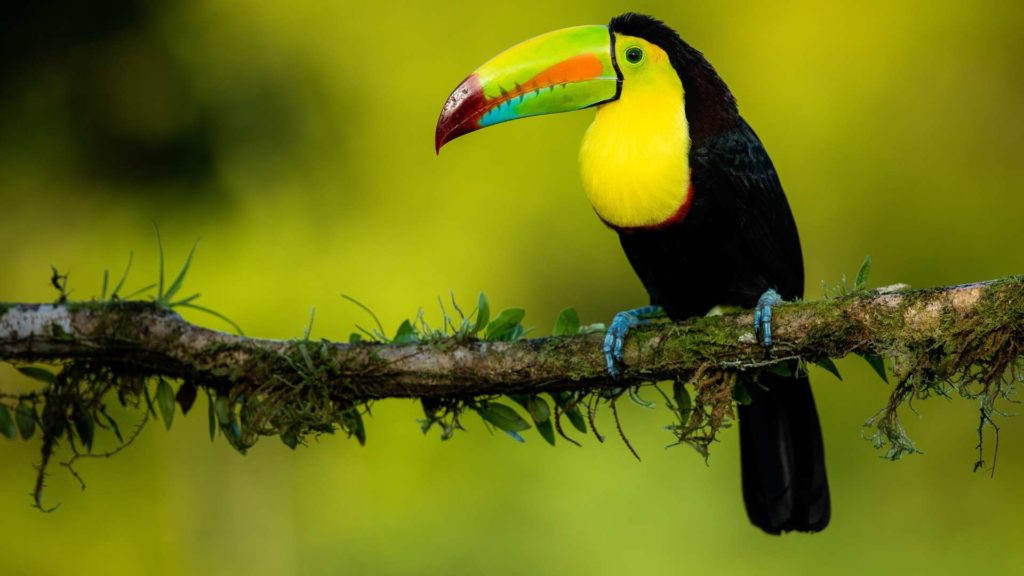Birding Tour
5 Days / 4 Nights
Day 1
A 30-minute flight from Quito to Coca will take you over the eastern Andes mountains. A 5 minute transfer will get you to La Mision Port. Here you will board a covered motor-boat. We will be riding along the Napo River for approximately 2 hours, stopping to enjoy a box lunch and coffee on the way.
You will be able to spot birds such as kingfishers and herons along the way. We disembark at the Napo Wildlife Center’s entrance dock for a brief break and to use the bathroom. We then take you on a peaceful, 2 hour paddle canoe trip, surrounded by wildlife and trees, paddling along the narrow creek to the lake where our lodge is located.
You may see many species of monkeys along with large birds such as parrots, macaws, and toucans. An afternoon arrival at Napo Wildlife Center will provide a stunning view of the Anangu Lake. A welcome drink and briefing from the local manager will follow.

Day 2,3,4 (Option A)
(The passengers can extend the days as needed)
We will be visiting the canopy tower, which is very sturdy and offers us privileged access into a different world than the rest of the rainforest. The full range of avifauna found in western Amazonia will be covered in three days or less. You will be amazed at the variety of microhabitats and habitats that are within reach of the lodge.
Oropendolas and aracaris, as well as tanagers and euphonias, roam the canopy looking for fruit. While plum-throated and spangled cotingas sing high up in the trees, raptors rest on vantage points where they can dry off in the morning sunlight. The crowned slaty flycatchers and the white-browed purpletufts are competing for insects. Many parrots, macaws, and other birds fly past or drop in to find fruiting trees nearby. The towering tree.
Access to the forest trail is a great way to see another part of the avifauna. Tinamous, woodcreepers and antbirds are all well represented. The vocally powerful and striking piha, as well as the striking black-necked red cotinga, should be easily found. You should keep your eyes open, your cameras charged, and your binoculars ready.
Day 2,3,4 (Option B)
On the NWC lands, there are several clay licks (“saladeros”) that exist. This is where we should be able to see and hear! The spectacle of hundreds upon hundreds of parakeets and parrots coming in to eat the clay is something we should all see.
It is a spectacular sight and never gets old. We’ll be visiting the community that built the lodge and runs it expertly. It also houses many other species, including magpie tanagers, rufous headed woodpeckers and swallow-winged puffbirds.
You can also take canoe rides along the creeks and lake near the lodge, where you will hear the songs of plumbeous and silvered antbirds echoing through the flooded forest. We will be looking for the elusive zigzag heron and the habitat specialist, the point-tailed manakin. The striking long-billed woodcreeper is also among the birds we’ll be looking for. Highlights include the incredible giant river otter and a variety of monkey species.
There are also islands in Rio Napo that, depending on their age and condition, can support an avifauna different from the one found only a few hundred meters away. We hope to see the black-and white antbird and olive-spotted hummingbird on these islands. You can also expect to see more river birds like the yellow-billed tern, collared pluto, and capped heron.
Day 5
Today we will make the journey back along the Añangu stream and head back up the Napo River to Coca for the return flight to Quito.